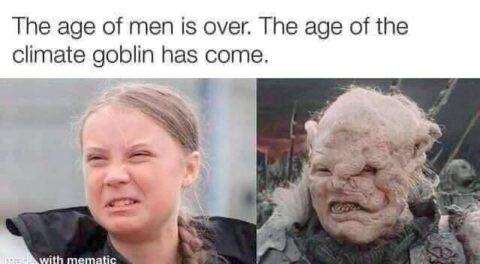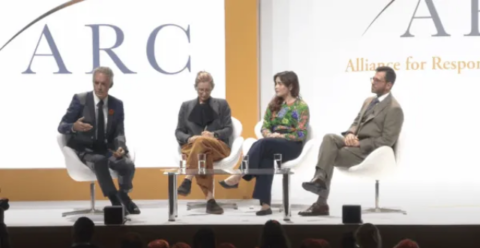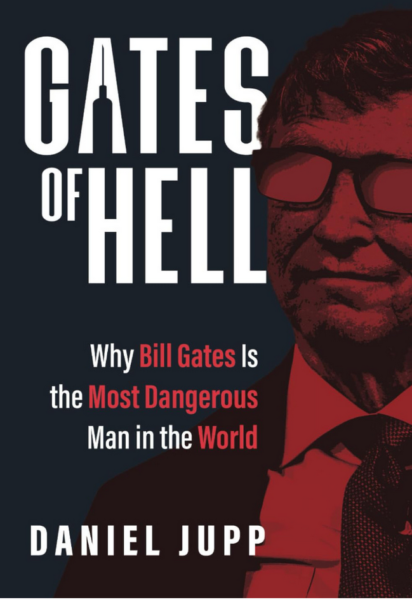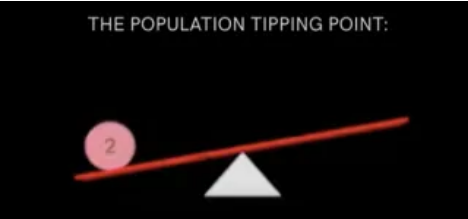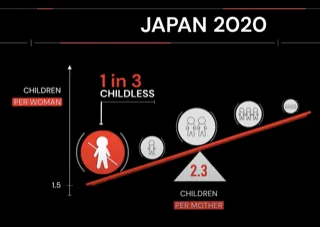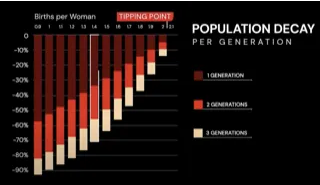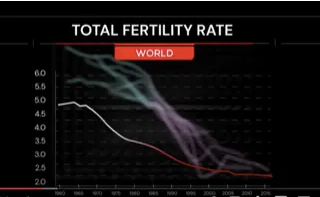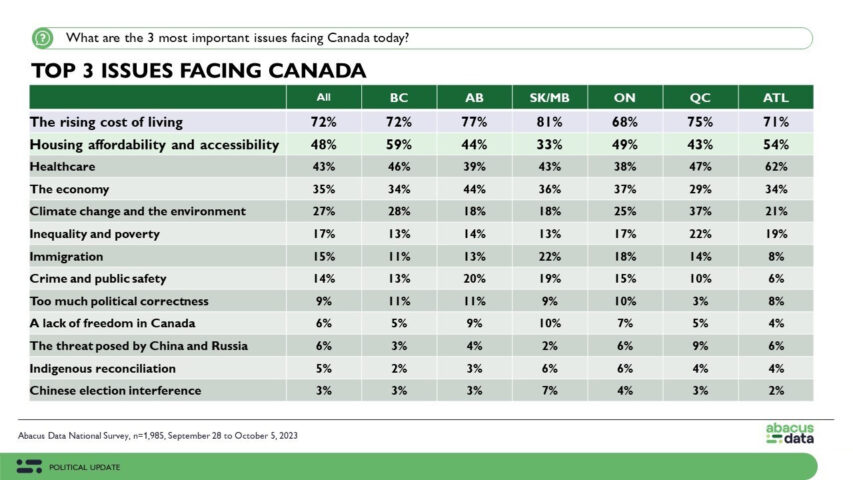… the women the PUAs are after aren’t the kind that interest me, much of “game” as described in the PUA culture fills me with a mix of recognition and revulsion. And a third, more complex reaction that is the real reason I’m writing this essay.
One one hand, I recognize techniques like kino escalation. Oh, do I ever! Adroit use of that one has gotten me into the sack more times than I can count. On the other hand, I’m basically incapable of what PUAs call the neg; I can’t insult a woman even by implication unless I think she’s done something to specifically deserve it, and the thought of flinging negs to score sex disgusts me in a very fundamental way.
On the gripping hand … I recognize a harsh truthfulness in a lot of what the PUAs are saying. Crudely put, the “game” advice for most men (the population PUAs call AFCs or “Average Frustrated Chumps”) reduces to behaving like an asshole so women will mistake you for an alpha. I really am an alpha, so I don’t have to asshole-fake it — but it is nevertheless quite clear to me that the PUAs are on to something. This is frequently a successful strategy; I’ve been outcompeted by it myself on several humiliating occasions. Furthermore, the PUAs are probably correct in asserting that for many AFCs it is the best strategy available, and never mind that the thought of running it myself turns my stomach.
In the PUA’s disturbingly persuasive analysis, I’ve had the luxury of not treating women like shit only because I have often had USPs for the brighter-than-average women I was interested in, notably in the combination of alpha-male qualities with high intelligence and expressive skills. Without those USPs, argues the PUA, my choices would have reduced to “frustrated loser” or “sexually successful douchebag” — and, looking at my own experience and that of my less successful peers, I find myself unable to refute this.
That is kind of horrifying if you think about it. Possession of USPs is rare by definition, and if you have one you’re more than averagely likely to be an alpha anyway. The PUA is telling us that human beings are designed in such a way that the most reliable way for the large majority of beta males to get sex is to behave like narcissistic, dominating, emotionally-unavailable jerks. This would be appalling enough as pure theory, but the PUA makes it worse by applying it to actually have lots of sex. “Success” one blog unsparingly observes “is defined by penis in vagina”. Never take your eye off that ball, says the PUA. Much as one might like to dismiss this as crass reductionism, evolutionary theory makes any countercase rather difficult to argue.
How did our poor species get into this hole? The PUA community gravitates to evolutionary-psychology explanations for human behavior as much as I do, it’s one of the interesting things about reading their stuff. It’s remarkable how often they manage to apply facts about human reproductive biology in a tactical way. The use they make of evo-bio concepts like hypergamy, peacocking, and sexy-son theory is, I find, sound and justified. The kind of pitiless clinical eye they turn on human mating interactions could scarcely be bettered by most scientists.
But the PUAs don’t, at least so far as I’ve yet seen, have a generative explanation for why women friend-zone nice guys and fuck bad boys. They accept this as the foundation of game without asking what circumstances in the environment of evolutionary adaptedness stuck women with apparently counterproductive wiring.
I’ve thought about this, and the only plausible explanation I can come up with is that in the EEA, when early humans lived in small hunting bands, the behaviors modern assholes now use to fake alpha must have been reliable indicators of superior status. Perhaps they were much more risky to fake in a small society where beta males were almost constantly under they eye of senior alphas with hard fists.
Meanwhile, back in modernity, we’re stuck with the consequences – men who have been trained to be imitation-alpha jerks and abusers by women who are sexually fickle, manipulative and cruel towards beta males. It’s not a pretty picture, not if you’re looking in from halfway outside it like me and certainly not if you’re stuck in the middle of it as an invisible AFC or a woman wondering why she’s surrounded by douchebags.
Eric S. Raymond, “A natural contemplates game”, Armed and Dangerous, 2011-03-03.
November 27, 2023
QotD: The PUA (Pick-up Artist)
November 24, 2023
It sometimes seems that the only thing that isn’t “violence” these days is actual violence
David Sedaris at The Free Press:

“Gen Z” by EpicTop10.com is licensed under CC BY 2.0
Words, we are now regularly reminded, are violence. So too is silence. I read not long ago that capitalism is violence, as is misgendering someone. Ignoring someone is violence, but so too is paying them attention. A friend recently called on one of her assistants to deliver a statistic during a business meeting and was later charged with “casual violence”. Apparently Deborah needed to give advance warning that she was going to ask a question, one that might possibly put her employee — someone who was well paid to know stuff and be able to spew it forth — on the spot.
Who are these hothouse flowers, all so easily and consistently wounded? People whose parents never hit them, that’s who. People who don’t know what real pain is, but still want to throw the word around. When I was a child, a slap across the face was too minor to qualify as “casual violence”. It was simply what you got for talking back or holding everyone up. It never hurt all that much; what stung was the swiftness of it, the surprise. Who knew my mother could move so fast, like someone belted in the martial arts. I don’t feel like it traumatized me to be knocked around a little. Blood was rarely drawn. No limbs were broken. Could my parents have made their point without resorting to violence? Probably, but it would have taken more time, and with six kids to dress and get out the door that was a precious commodity. I see parents now who worry they’re being abusive if they don’t spend at least an hour putting their child to bed. An hour! I said to my sister, Amy, “Do you remember ever once being tucked in? Can you imagine Mom and Dad reading to us, or singing? Can you imagine them kissing us?”
“Ugh,” she said. “Stop!”
And look at us! We’re fine. We can handle stuff. We never get offended by anything.
Our parents thought we were okay, at best, and I think that really helped us in the long run. Ask someone now if they have kids, and they’re pretty much guaranteed to use the word amazing, as in “I have an amazing six-year-old daughter.”
“Amazing because she just discovered a cure for herpes or because she speaks three words of Spanish,” I always want to ask. “I mean, just how low have you set that bar?”
One of the worst things that’s happened to us as a country is that people are having fewer children — 1.8 as opposed to five 50 years ago. Sure, it’s good for the environment — fewer people means less demand for resources. The problem is that single children receive a freakish amount of love and attention. Most graduate at least twelve times before leaving high school. Their every move is recorded and celebrated, and it gives them an outsize sense of their own importance.
The solution isn’t for every couple to start having five kids again, but maybe for one chosen couple to have five, and the other four couples to go without — either have a full litter you can’t pay that much attention to, or nothing at all.
If our schools are a mess it’s in large part due to these parents who think their kids are special, who get mad if you contradict their brilliance, if you give them a bad grade or, God forbid, try to take their phones away. Had one of my teachers told my mother that I was acting up in class, she’d have said, “Thank you so much for letting me know.” Then she’d have come to wherever I was — in front of the TV, or at the side of the TV making my way to the front of it — and slapped my sister Gretchen so hard her eyes would have crossed.
“What was that for?” Gretchen would have asked.
“Oops, wrong kid,” my mother would have said. Then she’d have slapped me twice as hard to make up for her mistake.
November 20, 2023
The latest scam – Natural Asset Companies (NACs)
Elizabeth Nickson on the US Securities and Exchange Commission’s plan to magic up some new ways to “financialize” national parks and other federally regulated places for the benefit of the hyper-wealthy and well-connected:

Soon to be a financially performing asset of BlackRock?
Grand Canyon of the Yellowstone, 21 June 2021. Photo by Grastel via Wikimedia Commons.
Delayed but not stopped, the U.S. government is planning a rule that allows for America’s protected lands, including parks and wildlife refuges, to be listed on the N.Y. Stock Exchange. Natural Asset Companies (NACs) will be owned, managed, and traded by companies like BlackRock, Vanguard, and even China.
The deadline was Friday, but earlier this week, the deadline was postponed until January. This is the usual criminal feint from the environmental movement and the administrative state. People are complaining? Let’s put it off till they go back to sleep. Then we will steal their birthright late at night, in precisely the manner we have stolen everything else.
[…]
The entire universe envies the lush interior of the U.S. Increasingly empty, it is filled with a cornucopia of minerals, fiber, food, waters, extraordinarily fertile soil as well as well-ordered, educated, mostly docile people. Worth in the quadrillions, if one could monetize and trade it, financialize it, the way the market has financialized the future labor of Americans, well, it would be like golden coins raining from the sky.
On October 4th, the Securities and Exchange Commission filed a proposed rule to create Natural Asset Companies (NACs). A twenty-one day comment period was allowed, which is half the minimum number of days generally required and when they postponed passing the rule, they did not extend the comment period. “Nope, shut up,” they said.
NACs will allow BlackRock, Bill Gates, and possibly even China to hold the ecosystem rights to the land, water, air, and natural processes of the properties enrolled in NACs. Each NAC will hold “management authority” over the land. When we are issued carbon allowances, owners of said lands will be able to claim tax deductions and will be able to sell carbon allowances to businesses, families and townships. In the simplest of terms, that’s where the money will be made. WE peons will be renting air from the richest people on earth.
The following are eligible for NACs: National Parks, National Wildlife Refuges, Wilderness Areas, Areas of Critical Environmental Concern, Conservation Areas on Private and Federal Lands, Endangered Species Critical Habitat, and the Conservation Reserve Program. Lest you think that any conserved land is conserved in your name, the largest Conservation organization in the U.S., is called The Nature Conservancy, or TNC, which, while being a 501(c)3, also holds six billion dollars of land on its books. Those lands have been taken using your money via donations and government grants, and transferred to the Nature Conservancy, which can do with those lands what it wills.
If this rule passes, America’s conserved lands and parks will move onto the balance sheets of the richest people in the world. Management of those lands will be decided by them and their operations, to say the least, will be opaque.
μολὼν λαβέ, buddy.
A Tour of the Excavations at Vindolanda
Scenic Routes to the Past
Published 4 Aug 2023This spring, Dr. Andrew Birley gave me a tour of the ongoing excavations at Vindolanda, a Roman fort near Hadrian’s Wall.
Chapters:
0:00 Welcome to Vindolanda
4:41 The wooden underworld
7:13 Layers of history
9:03 Becoming part of the story
November 19, 2023
“This was a law despised by almost everybody who hasn’t personally had intimate relations with an old-growth tree or an orca”
Colby Cosh meditates on the unexpectedly sensible decision by a Federal Court judge, striking down the Feral government’s virtue-signal-made-law on single-use plastic items:

“Single use plastic objects on pink background” by wuestenigel is licensed under CC BY 2.0 .
On Thursday a Federal Court judge, the Hon. Angela Furlanetto, startled the Dominion by essentially sweeping aside the Liberal government’s ban on a short list of single-use plastic items, including grocery bags, cutlery, takeout containers and drinking straws. This was a law despised by almost everybody who hasn’t personally had intimate relations with an old-growth tree or an orca. We all now live in a world where we accumulate large numbers of cloth grocery bags and eat takeout meals off of wooden disposable cutlery in the name of the environment; meanwhile, we no longer accumulate the “single-use” grocery bags that us skinflints used to hoard and reuse before consigning them harmlessly to a landfill.
All right, maybe it’s a stupid law that does more environmental harm than good. Federal governments are allowed to make those! But Justice Furlanetto, asked for judicial review by Alberta and Saskatchewan and a coalition of petrochemical processors, concluded that the actual rule was “both unreasonable and unconstitutional”.
Her judgment is a thorny 200-paragraph monster, but the innermost logic of it is simple. The federal Environmental Protection Act allows Ottawa to ban or restrict “toxic” substances that might enter the environment. In 2021 the Liberals made a cabinet order essentially saying “These here single-use plastic items are hereunto declared to be toxic. Abracadabra!” No one can show that these items are actually poisonous in the ordinary sense, and the listed items weren’t condemned as substances, i.e., for their chemical content or composition. The reasoning of the government was that if an Arctic lynx might choke on the ring from a six-pack of Labatt Blue, that kinda sorta makes the plastic in the ring “toxic”, and justifies the federal government in the use of its criminal-law power.
I don’t know if anyone at the cabinet table anticipated how this argument would fare under a “reasonableness” analysis with lawyers for two provinces, plus Dow Chemical and Imperial Oil, among others, on the opposite side. But the government almost certainly faced a piece of extra bad luck in having the case go before Justice Furlanetto, a jurist with hard-science credentials that include a master’s degree in biochemistry. She did not like the slippery game being played with the concept of “toxicity”, not one bit.
In her judgment she observes that the explicitly stated rationale for the plastics ban was that “all plastic manufactured items have the potential to become plastic pollution”. Justice Furlanetto found this reasoning to be puzzlingly ass-backward. “The basic principle of toxicity for chemicals is that all chemical substances have the potential to be toxic,” she writes. “However, for a chemical substance to be toxic it must be administered to an organism or enter the environment at a rate (or dose) that causes a high enough concentration to trigger a harmful effect. In this instance, the reverse logic appears to be applied: all PMI are identified as toxic because they are made of plastic and because all plastic is deemed to have the potential to become plastic pollution.”
November 15, 2023
Can we criticize the Climate Goblin now?
Brendan O’Neill asks if it’s allowed to criticized Greta “The Climate Goblin” Thunberg now:
Can we criticise Greta Thunberg now? For a time, anyone who raised even the mildest objection to the pint-sized prophetess of doom risked being damned as a bully. Surely this moratorium on Greta-scepticism will end following her platforming – to use woke lingo – of an activist with very iffy views. An activist who has trivialised the Holocaust and seems pretty chilled about Hamas’s pogrom of 7 October. Calling out Greta for her fact-lite blather about the planet being “on fire” may have been forbidden – pulling her up for hanging out with Holocaust relativists must not be.
Thunberg has made waves by switching her focus from saving the planet to saving Gaza. Like every other Gen Zer with a TikTok and an insatiable urge to signal his / her / zir virtue to the world, she’s become an overnight authority on Israel-Palestine. She posed with a placard saying “Stand with Gaza“. She turned Fridays for Future – where pious rich kids bunk off school to raise awareness about climate change – into “Justice for Palestine” stunts. And on Sunday, she made a climate protest in Amsterdam pretty much all about Palestine.
She invited activists to the stage. One was Sara Rachdan, a Palestinian studying in Amsterdam. It didn’t take German newspaper Bild long to discover that Ms Rachdan holds views which – how should we put this? – are not very pleasant. On Hamas’s pogrom, Ms Rachdan said: “This is finally Palestinians taking action [against] the occupation”. She’s dabbled in Holocaust denigration. She shared a blood-spattered graphic comparing Israel’s actions in Gaza with the Nazis’ actions in Auschwitz. Repulsively, it implies the Jewish State is worse than the Nazis. Where 127 kids a day were killed in Auschwitz, 178 a day are currently dying in Israel’s war in Gaza, it alleges.
Shorter version: the Jews are more accomplished child-killers than even Hitler’s henchmen were. This is rank Holocaust relativism. Comparing the greatest crime in history to this horrendous war denudes that crime of its unique horror. It renders it ordinary. It was no big deal – just the same kind of thing you see on your TV screens every night from Gaza. The implication of moral equivalence between the Nazis’ minutely planned gassing of Jewish children and the deaths of Palestinian kids as a terrible byproduct of Israel’s war on Hamas is beyond immoral. It is the gravest of inversions, treating the Jewish State’s war against anti-Semitic mass murderers as indistinguishable from the Nazis’ acts of anti-Semitic mass murder.
Of course, there’s nothing to suggest Greta shares Ms Rachdan’s views. But isn’t her woke generation obsessed with “platforming”, with only rubbing shoulders with the perfectly politically correct and no one else? Indeed, Thunberg ostentatiously flounced out of the Edinburgh Book Festival earlier this year because it received funding from a firm that invests in fossil fuels. Take oil money and she’ll dodge you like the plague; describe an anti-Semitic pogrom as an act of resistance and she’s all over you like a cheap suit. Care to explain, Greta?
November 13, 2023
Winners and losers of the “sexual revolution”
Janice Fiamengo missed her trip to London this week due to illness, so she also missed a panel discussion at the ARC (Alliance for Responsible Citizenship) Conference that raised her ire:
On the subject of widespread sexual promiscuity, family breakdown, and fatherless homes, pundits Jordan Peterson, Louise Perry, Mary Harrington, and Stephen Blackwood carefully ignored the hulking feminist elephant in the room, arguing that the primary victims of the sexual revolution have been women (and children as well, as something of an afterthought). The primary beneficiaries have been a few psychopathic men who have left a trail of broken hearts and rudderless children in their wake. It’s a convenient thesis in a culture terminally averse to criticizing women, but it avoids some important facts.
The whole discussion, actually, begins from a false premise. If there was ever a sexual revolution in which we all simply consented to do what we wanted sexually, as Louise Perry claimed, that revolution ended over 30 years ago when Anita Hill complained before a Senate Judiciary Committee that Clarence Thomas, former chair of the Equal Employment Opportunity Commission, should not be confirmed as a Supreme Court Justice because he had once joked to her about a pubic hair floating on his Coke. At that point, the alleged sexual vulnerability of women, whose sensitive ears must not be subject to comments by male colleagues about pornography or penis size — and the need for legislation to protect and accommodate them at the expense of male freedom of expression — reasserted itself with a vengeance. The feminist claim that women merely wanted equal rights and an end to sexual double standards was exposed as a feeble lie.
Sexual harassment legislation soon made it a potential firing offence for a man to make a female workmate uncomfortable, whether by standing too close, looking too intently, or making the wrong joke or comment. Later, the #MeToo movement proclaimed it righteous that any man who had ever been sexual with any woman (or even just any man, who didn’t even have to know the woman smearing his name) could be accused of sexual misconduct, fired from his job, and permanently disgraced (the DAMN Handbook contains an extraordinary list of celebrity men destroyed by allegations in 2017 alone; see pp. 8-17). Free love, if it ever existed, has been dead for a long time, and some of the same women who cheered on the idea of sexual freedom were the ones who killed it.
But #MeToo, false allegations, the ever-expanding territory of sexual misconduct, and the anti-male tenor of nearly every public discussion about sex—these were emphatically not the focus of the ARC panel, which zeroed in on female sexual victimization. The goals that countless women have proclaimed necessary—sexual freedom, abundant birth control, single motherhood—were criticized as harms for women. We heard that the medium to long-term well-being of women and children has been sacrificed to the short-term gratification of a minority of men; and that these men also tend to be, according to Peterson, possessed of psychopathic, Machiavellian, narcissistic, and sadistic tendencies. Amongst the fallout are the 50% of British children raised in homes without fathers.
It was stirring stuff, certainly, though not exactly a new proposition. Radical feminists like Sheila Jeffries have long argued (in her book Anticlimax: A Feminist Perspective on the Sexual Revolution and elsewhere) that the sexual revolution merely affirmed and updated the victimization of women by men while conservative non-feminists like Phyllis Schlafly pointed out how feminist policies and laws have disadvantaged women.
Yet even those of us without doctorates in psychology might wonder how it could be true that so many women have been the innocent and unwitting victims of men even when they themselves chose those men. Are there not women who engage in abundant casual sex with as much blithe indifference as the men; some of them too psychopathic, narcissistic, Machiavellian and cruel? Why have so many women over the years championed the loosening of sexual mores — including the availability of abortion, never mentioned by any of the panelists — if it was not in their own best interests to do so?
Or are these panelists saying that women cannot be trusted to know their own best interests and those of their children? Why do so many women continue to embrace sexual hedonism, abortion, and divorce? In reality, the epidemic of fatherlessness, as nobody on the panel was interested in exploring, is not the result of the sexual revolution per se, but was made possible specifically by the rise of no-fault divorce and child support laws that, in feminist-compliant family courts, made it highly attractive for women to discard their husbands while still living off his earnings (divorce is today initiated by women in about 70% of cases, and is one of the major reasons so many young men today are averse to marriage). It may well be that nobody’s long-term well being is served by this reality, but it is what women have been choosing with their eyes wide open for many years, and it is a bit rich now to pretend it was something done to them without their consent.
November 12, 2023
The most dangerous man in the world?
Elizabeth Nickson on Daniel Jupp’s new biography of Bill Gates, Gates of Hell: Why Bill Gates is the Most Dangerous Man in the World:
A new book, Gates of Hell: Why Bill Gates Is the Most Dangerous Man in the World by Daniel Jupp, manages to dissect all of Gates’s activities since September 2011 and has he ever been a busy psychopath. Jupp is one of the several gifted polemicists called forth by the gnarly times we live in. He soared to recognition with witty, but somehow soothing Facebook blasts that combined PJ O’Rourke with Jonathan Swift with Steve Bannon. Everyone passed around his posts exulting. Jupp, if that is his real name, hails from working class England, Essex to be precise-ish, and edits or writes for Country Squire Magazine. Whatever, he is of the time and do we ever need him.
Jupp in Gates of Hell is careful. He does not risk libel, not even a whiff of it. And in contrast to his usual oxygen-rich posts, he is measured, calm, working with a surgeon’s focus, as he peels back the PR, the methodology, the results, the hiding of the malign results, the cantering on to the next heady task as the ultimate white Saviour. Unfortunately, as Jupp describes, Gates is not quite as simple as that. He also changes law, dictates policy in far too many countries where he does not belong, buys all the media, and every politician he can. When he calls, the Great and the Good come to sit in his Presence and be lectured to in that stickily sentimental tone about his noble purpose. When he makes a mistake, and almost everything he does is a mistake, he spends several hundred million dollars buying desperate legacy media and every functional PR firm to cover it up.
Gates’s life changed when his practice of turning competitors to scorched earth, thereby crippling innovation in the digital world, resulted in an embarrassing court case. The sullen, nit-picking slug on trial, radiating contempt is, I suspect, the real Gates, or his shadow self, very much like Gollum in LOTR defending his Precious. Jupp skates by the many charges of sexual abuse, but points out that he formally left Microsoft after one of them became too big to ignore.
Gates then constructed his new self. He married, not a babe, but a substantive character, and had three children in quick succession. He hired the most expensive fixers and PR, and built himself an avuncular sweater-clad persona. He was going to give away his massive fortune, give back to the people from his incredible privilege.
In the ensuing years, that fortune doubled and then doubled again.
That’s because he met Jeffrey Epstein. While Epstein’s sexual activities have received 90% of the attention, his activities during the last years of the Clinton administration are the more significant. First of all, Epstein was running an entrapment scheme for various covert agencies, which made his insinuation into government easy. At the same time, he taught high-level government officials, cabinet ministers, heads of agencies, and the great larcenous dame herself, Hillary Clinton, how to steal. It was a pincer movement. Having second thoughts? Here’s a video of your encounter with a fourteen year old.
I’ll make it super simple: he taught these people, and they weren’t all Democrats, how to stand up a policy meant to benefit the least advantaged, like for instance access to the housing ladder, and then profit off it. Since then every government initiative has carved out for its progenitor, a fortune. His first, of course, was Freddie Mac and Fannie Mae and James Johnson who ran these agencies into deep bankruptcy, collapsed the ’08 economy, nevertheless walked away with $100 million from a government job. Wall Street Journal reporter, Gretchen Morgenson’s Reckless Endangerment covers the waterfront here.
Who Destroyed The Library of Alexandria? | The Rest is History
The Rest is History
Published 21 Jul 2023Step back in time with renowned historians Dominic Sandbrook and Tom Holland as they embark on an enthralling journey to explore the enigmatic tale of the Library of Alexandria’s destruction. Join them as they uncover the who, what, and why behind one of history’s greatest losses.
#LibraryOfAlexandria #DominicSandbrook #TomHolland
QotD: Archaeological evidence on the foundation of Rome
The first thing we need to talk about is the physical location of Rome and the peoples directly around it. […] Rome in its earliest history was, essentially, a frontier city, placed at the very northern end of Latium, the region of Italy that was populated by Latin-speakers. Rome’s position on the Tiber River put it at the cultural meeting place of the Etruscan (and Faliscian) cultural zone to the North, Latium to the South and Umbrian-speaking peoples in the Apennine uplands to the North-East. To the West, of course, lay the Sea, which by Rome’s legendary founding date was already beginning to fill with seaborne merchants, particularly Phoenician and Greek ones […] These patterns of settlements and cultural zones are both attested in our literary sources but also show up fairly clearly in the archaeology of the region.
Rome itself, a cluster of hills situated at an important ford over the Tiber (and thus a natural trade and migration route running north-south along Italy’s Western side), was already inhabited by the close of the Neolithic with small settlement clusters on several of its hills. As you might well imagine, excavating pre-historic Rome is difficult, due to the centuries of development piled on top of it and the fact that in many cases pre-historic evidence must exist directly below subsequent ruins which are now cultural heritage sites. Nevertheless, archaeology sheds quite a lot of light. That archaeological evidence allows us to reject the sort of “empty fields” city foundation that Livy implies. Rather than being “founded”, the city of Rome as we know it formed out of the political merger of these communities (the technical term is synoecism from Greek συνοικισμóς, literally “[putting] the houses together”). There is, importantly, no clear evidence of any archaeological discontinuity between the old settlements on the hills and the newly forming city; these seem to have been the same people. The Palatine hill, which is “chosen” by Romulus in the legend and would be the site of the houses of Rome’s most important and affluent citizens during the historical period, seems to have been the most prominent of these settlements even at this early stage.
A key event in this merging comes in the mid-600s, when these hill-communities begin draining the small valley that lay between the Capitoline and Palatine hills; this valley would naturally have been marshy and quite useless but once drained, it formed a vital meeting place at the center of these hill communities – what would become the Forum Romanum. That public works project – credited by the Romans to the semi-legendary king Tarquinius Priscus (Plin. Natural History 36.104ff) – is remarkably telling, both because it signals that there was enough of a political authority in Rome to marshal the resources to see it done (suggesting somewhat more centralized government, perhaps early kings) and because the new forum formed the meeting place and political center for these communities, quite literally binding them together into a single polity. It is at this point that we can really begin speaking of Rome and Romans with confidence.
What does our archaeology tell us about this early community at this point and for the next several centuries?
The clearest element of this early polity is the Latin influence. Linguistically, Rome was of Latium, spoke (and wrote their earliest inscriptions) in Latin and it falls quite easily to reason that the majority of the people in these early hilltop communities around the Tiber ford were culturally and linguistically Latins. But there are also strong signs of Etruscan and Greek influence in the temples. For instance, in the Forum Boarium (between the Tiber and the Palatine), we see evidence for a cult location dating to the seventh century, with a temple constructed there in the early sixth century (and reconstructed again towards the end of that century); votive offerings recovered from the site include Attic ware pottery and a votive ivory figurine of a lion bearing an inscription in Etruscan.
Archaeological evidence for the Sabines is less evident. Distinctive Sabine material culture hasn’t been recovered from Rome as of yet. There are some clear examples of linguistic influence from Sabine to Latin, although the Romans often misidentify them; the name of the Quirinal hill, for instance (thought by the Romans to be where the Sabines settled after joining the city) doesn’t seem to be Sabine in origin. That said, religious institutions associated with the hill in the historical period (particularly the priests known as the Salii Collini) may have some Sabine connections. More notably, a number of key Roman families (gentes in Latin; we might translate this word as “clans”) claimed Sabine descent. Of particular note, several of these are Patrician gentes, meaning that they traced their lineage to families prominent under the kings or very early in the Republic. Among these were the Claudii (a key family in Roman politics from the founding of the Republic to the early Empire; Liv. 2.16), the Tarpeii (recorded as holding a number of consulships in the fifth century), and the Valerii (prominent from the early days of the Republic and well into the empire; Dionysius 2.46.3). There seems little reason to doubt the ethnic origins of these families.
So on the one hand we cannot say with certainty that there were Sabines in Rome in the eighth century as Livy would have it (though nothing rules it out), but there very clearly were by the foundation of the Republic in 509. The Sabine communities outside of Rome (because it is clear they didn’t all move into Rome) were absorbed in 290 and granted citizenship sine suffrago (citizenship without the vote) almost immediately; voting rights came fairly quickly thereafter in 268 BC (Vel. Pat. 1.14.6-7). The speed with which these Sabine communities outside of Rome were admitted to full citizenship speaks, I suspect, to the degree to which the Sabines were already by that point seen as a kindred people (despite the fact that they spoke a language quite different from Latin; Sabine Osco-Umbrian was its own language, albeit in the same language family).
The only group we can say quite clearly that there is no evidence for in early Rome from Livy’s fusion society are the Trojans; there is no trace of Anatolian influence this early (and we might expect the sudden intrusion of meaningful amounts of Anatolian material culture to be really obvious). Which is to say that Aeneas is made up; no great surprise there.
But Livy’s conception of an early Roman community – perhaps at the end of the sixth century rather than in the middle of the eighth – that was already a conglomeration of peoples with different linguistic, ethnic and religious backgrounds is largely confirmed by the evidence. Moreover, layered on top of this are influences that speak to this early Rome’s connectedness to the broader Mediterranean milieu – I’ve mentioned already the presence of Greek cultural products both in Rome and in the area surrounding it. Greek and eastern artistic motifs (the latter likely brought by Phoenician traders) appear with the “Orientalizing” style in the material culture of the area as early as 730 B.C. – no great surprise there either as the Greeks had begun planting colonies in Italy and Sicily by that point and Phoenician traders are clearly active in the region as well. Evidently Carthaginian cultural contacts also existed at an early point; the Romans made a treaty with Carthage in the very first year of the Republic, which almost certainly seems like it must have replaced some older understanding between the Roman king and Carthage (Polybius 3.22.1). Given the trade contacts, it seems likely that there would have been Phoenician merchants in permanent residence in Rome; evidence for such permanently resident Greeks is even stronger.
In short, our evidence suggests that were one to walk the forum of Rome at the dawn of the Republic – the beginning of what we might properly call the historical period for Rome – you might well hear not only Latin, but also Sabine Umbrian, Etruscan and Greek and even Phoenician spoken (to be clear, those are three completely different language families; Umbrian, Latin and Greek are Indo-European languages, Phoenician was a Semitic language and Etruscan is a non-Indo-European language which may be a language isolate – perhaps the modern equivalent might be a street in which English, French, Italian, Chinese and Arabic are all spoken). The objects on sale in the markets might be similarly diverse.
I keep coming back to the languages, by the by, because I want to stress that these really were different people. There is a tendency – we will come back to it next time – for a lot of modern folks to assume that, “Oh well, these are all Italians, right?” But the idea of “Italians” as such didn’t exist yet (and Italy even today isn’t quite so homogeneous as many people outside of it often assume!). And we know that the different languages were mirrored by different religious and cultural practices (although material culture – the “stuff” of daily life, was often shared through trade contacts). Languages thus make a fairly clear and easy marker for a whole range of cultural differences, though – and we will come back to this as well – it is important to remember that people’s identities are often complex; identity is generally a layered, “yes, but also …” affair. I have only glanced over this, but we also see traces of Latin, Etruscan, Greek and Umbrian religious practice in early Roman sanctuaries and our later literary sources; Phoenician influence has also been posited – we know at least that there was a temple to Uni/Astarte in Pyrgi within 30 miles of Rome so Phoenician religious influence could never have been that far away.
We thus have to conclude that Livy is correct on at least one thing: Rome seems to have been a multi-ethnic, diverse place from the beginning with a range of languages, religious practices. Rome was a frontier town at the beginning and it had the wide mix of peoples that one would expect of such a frontier town. It sat at the juncture of Etruria (inhabited by Etruscans) to the north, of Latium (inhabited by Latins) to the South, and of the Apennine mountains (inhabited by Umbrians like the Sabines). At the same time, Rome’s position on the Tiber ford made it the logical place for land-based trade (especially from Greek settlements in Campania, like Cumae, Capua and Neapolis – that is, Naples) to cross the Tiber moving either north or south. Finally, the Tiber River is navigable up to the ford (and the Romans were conscious of the value of this, e.g. Liv 5.54), so Rome was also a natural destination point for seafaring Greek and Phoenician traders looking for a destination to sell their wares. Rome was, in short, far from a homogeneous culture; it was a place where many different peoples meet, even in its very earliest days. Indeed, as we will see, that fact is probably part of what positioned Rome to become the leading city of Italy.
(For those looking to track down some of these archaeological references or get a sense of the source material, though it is now a touch dated, The Cambridge Ancient History, Vol 7.2: The Rise of Rome to 220 B.C., edited by F.W. Walbank, A.E. Astin, M.W. Frederiksen, and R.M. Ogilvie (1990) offers a fairly good overview, particularly the early chapters by Ogilvie, Torelli and Momigliano. For something more suited to regular folks, when I teach this I use M.T. Boatwright, D.J. Gargola, N. Lenski and R.J.A. Talbert, The Romans: From Village To Empire (2012) and it has a decent textbook summary, p. 22-42, covering early Rome with particularly good reference to the archaeology)
Bret Devereaux, “Collections: The Queen’s Latin or Who Were the Romans? Part I: Beginnings and Legends”, A Collection of Unmitigated Pedantry, 2021-06-11.
November 9, 2023
How they saved the holes in Swiss cheese
Tom Scott
Published 1 May 2023Agroscope is a Swiss government-backed agricultural research lab. It’s got a lot of other resarch projects too, but it also keeps a backup of the Swiss cheese bacterial cultures… just in käse.
(more…)
November 8, 2023
QotD: Climate change, sorcerism and magical thinking
Many primitive societies believe that maleficient spirits cause all sorts of human misfortune that in the modern West we have learned to attribute to natural causes – cattle dying, crops failing, disease, drought, that sort of thing. A few societies have developed a more peculiar form of supernaturalism, in which evil spirits recede into the background and all misfortune is caused by the action of maleficient human sorcerers who must be found and rooted out to end the harm.
A society like that may be a grim, paranoid place with everyone constantly on the hunt for sorcerers – but a sorcerer can be punished or killed more easily than a spirit or a blind force of nature. Therein lies the perverse appeal of this sort of belief system, what I’ll call “sorcerism” – you may not be able to stop your cattle from dying, but at least you can find the bastard who did it and hurt him until you feel better. Maybe you can even prevent the next cattle-death. You are not powerless.
[…]
The most puzzling thing about the whole exchange was his insistence on interpreting my talk about the weather as a political move. I report the Central Valley superstorm of 1861-62 and R’s response is “When did you turn into Rush Limbaugh?” Uh, WTF, over?
It took me a while to model the frame of mind that produced this, but when I managed to I had an insight. Which is why I’m writing this essay. I think, now, what I actually threatened was R’s belief that he, or somebody, could do something emotionally satisfying about the bad weather. Fix it, or prevent it from recurring, or at least punish the bastards who did it.
Supernaturalizing the causes of large-scale misfortunes has become a difficult strategy to sustain for anyone with more exposure to modern scientific knowledge than a cinderblock. Politicizing them into someone’s bad juju, however … that’s easy. And, perhaps, more attractive than ever before – because the alternative is to feel powerless, and that is painful.
Science and the increase in our control over our immediate environment at the small scale may, in fact, be driving us back towards a sort of sorcerism by making the feeling of powerlessness more painful. We are children of humanism and the Enlightenment; terror of the storm and dark is something we associate with the bad old days of angry gods. We should be beyond that now … shouldn’t we?
Thus, the politicization of every bad thing that happens. And people like R, for whom “When did you turn into Rush Limbaugh?” becomes a sort of aversive charm to ward off fear of the Central Valley superstorm and its like.
Yes, we need a word for this, too. Not “sorcerism”; “politicism”, perhaps. The insistence on locating for every large-scale problem a human cause that can be addressed through politics and a set of serviceable villains to punish. Also, the insistence that anyone who rejects the politically fashionable explanation must be in league with the evil sorcerers.
Unfortunately, reality isn’t like that. If a supernova goes off within eight parsecs of us and strips off the Earth’s ozone layer it won’t have been Halliburton or the International Communist Conspiracy that did it. And if the Central Valley superstorm does repeat on us – well, statistically that looked pretty likely at a mean interval of about 150 years; welcome to your new normal, and hunting for the evil carbon-or-whatever emitters that did it is highly unlikely to do any more than supplying you with a scapegoat to ease your hurt feelings.
Finally … feeling powerless may suck, but on the whole it’s preferable to sorcerer hunts. People get killed in sorcerer hunts, almost always people who are innocent. One reason I’m not a politicist is that I don’t want to be any part of a howling mob. It’s a form of self-restraint I recommend to others.
Eric S. Raymond, “Heavy weather and bad juju”, Armed and Dangerous, 2011-02-03.
November 7, 2023
Birth Gap, the future none of us expected
Elizabeth Nickson takes the warnings of infertility from BirthGap quite seriously:
Jordan Peterson’s face morphed through a series of changes as he realized that nine out of ten women who don’t have children, wanted them. Ready to blame the culture of narcissism, he stalled confused, wrestling his face to neutral. I knew that fact from experience. For the many women I know who don’t have children, it is an abiding sorrow. From country to country, class to class, race to race, the sorrow is coruscating and it is ignored or diminished.
Only one in ten women actually don’t want children. One in ten is infertile, but the rest who don’t have children and that is one-third of us and counting, wanted them. By the time they are in their 40’s and incapable, badly.
Steven F Shaw searches for answers in Birth Gap, his masterwork documentary, the first part of which you can watch here. The most obvious is that they waited too long, thinking it was possible, their “career” taking precedence. He interviews two prominent women in their late 30’s, both journalists. One of whom has a child, and having had one, wanted more but it was too late. “No one told us”, she said. Throughout her childhood and education, no one told her that the hammer would come down, that fertility drops off a cliff in your 30’s. That if you are 30 and childless, there is a 50% chance you won’t have children. The other, Megan McArdle, who writes for the Washington Post, left it too late. McArdle is a brilliant woman. If she didn’t know she was playing with fire, who could?
The catastrophic statistics run across all cultures but sub-Saharan Africa. Every industrialized country is racing to the bottom, which is to say extinction within four or five generations. Cities left to ruin, old people without help, decaying schools, hospitals, and no employees to be found. The unretrievable extinction of the culture and its people. I’ll leave it to you to follow Shaw’s math, but it is convincing. And he is by no means, alone in his analysis.
Europe, Japan and especially South Korea are by far the most in trouble. But Spain, Italy, the Scandis, are not far behind. America’s massive migration is masking the effect now, but, as Shaw doesn’t point out, but others have, immigrants quickly default to the current zeitgeist. Even in Muslim countries, pace Mark Steyn, women are choosing to not have children until too late. And forget multiples, even for the devout, it’s no longer on the cards.
To me, one underlying reason is the firehose of overpopulation propaganda that we have endured for the past fifty years. Women, in general, as kids, are good girls, accepting of authority, and compassionate. When told their desire for children is stressing the earth, they are more likely to accept that nonsense without question if it is coming from every authority figure in every sector of the culture. Today from kindergarten on, we are taught that we are a virus, a plague on the earth. Who among us, at the age of 15 or 25, can contravene that level of brainwashing? Contrast Peterson saying this week, “we can make the deserts bloom”. When was the last time you heard that sentiment from anyone in authority?
November 5, 2023
Dear Supreme Court of Canada, “ever get the feeling you’ve been cheated?”
Colby Cosh outlines the arguments the federal government used to persuade a majority of the sitting justices of the Supreme Court of Canada to greenlight Justin Trudeau’s carbon tax tax grab and wonders if they suspect they got fast-talked:

“Supreme Court of Canada, Ottawa” by daniel0685 is licensed under CC BY 2.0
The decision agreeing to this was signed by six of the nine justices of the court: Richard Wagner, Rosalie Abella, Michael Moldaver, Andromache Karakatsanis, Sheilah Martin and Nicholas Kasirer. Today I confront these eminences with the immortal question once asked by Johnny Rotten: ever get the feeling you’ve been cheated?
Last week the Liberal government whose hirelings rhapsodized about the urgent, indivisible, inherently national nature of carbon pricing announced a “temporary” total exemption for fuel oil used for home heating. This has the effect of letting some households in the Atlantic provinces out of a tax that applies to cleaner BTUs in the rest of the country, and the targeted regional nature of this move has been emphasized rather than concealed by Liberal ministers.
Oh, to be sure, it’s temporary. The three-year duration of the exemption just happens to push its expiry past the next federal election. What happens at that point, who knows? And to be sure, the exemption applies to fuel oil for home heating everywhere in Canada where the federal carbon tax applies. It just so happens that the electorally crucial Atlantic is the only place where a significant number of households still depend on the system. The Liberals can perhaps say with a straight face that there is no conflict here with the underpinnings of the arguments that succeeded so beautifully in the Supreme Court.
But if the GGPPA References were re-litigated now, after the attempt to impose the carbon tax and the panicky local retreat, one wonders whether the “national concern” blarney would seem quite so convincing. We are not, in turns out, all in this leaky planetary lifeboat together. The urgency of carbon pricing, it turns out, is not quite paramount and transcendent. Its indivisibility and inherent nationalness are not as promised. The Liberals didn’t want to save the planet quite so much, it seems, as they just wanted to make the rules for their own electoral benefit.
At The Line, Harrison Ruess, who recently switched his home heating solution from a mixed oil and propane to just propane, wonders why his choice to go with the lower-carbon option will end up penalizing him under the latest policy change by the feds:
Indeed, in looking deeper at the regional numbers, the concern about the rising cost of living and housing affordability isn’t particularly acute in Atlantic Canada versus other parts of the country. The chart below, provided to me by David Coletto at Abacus Data, and published here at The Line first, reveals just how difficult a position the PM has now staked out for his government. While Atlantic Canadians are somewhat more concerned about housing affordability than average, they are very slightly less concerned than the average Canadian about the overall rising cost of living. In Saskatchewan and Manitoba, for example, the opposite is true: they’re less concerned than average about housing affordability, but more concerned than average about the rising cost of living.
The takeaway to me in looking at this is that all Canadians are worried about costs and affordability.
The other question that jumped to mind is: why only heating oil? Heating oil is useful in places without good access to natural gas pipelines, and that does include much of Atlantic Canada, but also to rural areas everywhere, where other fuels, such as propane or wood pellets, are also used. According to the propane association, there are about 200,000 Canadian homes using propane — of which about 30,000 are in Atlantic Canada.
I can speak to this with some personal experience. When my wife and I purchased our home in semi-rural Ottawa, it had a Frankenstein heating system that used heating oil for part of our home and propane for another. Just this summer we completed a (somewhat expensive) rationalization of our system to combine the two into one larger, though more efficient, propane system.
Having one system will hopefully save us money on maintenance and hydro costs — powering and maintaining one system should cost less than two. It will also save us a couple hundred bucks a year on our home insurance (did you know there’s an extra premium if you have a heating oil tank? Welcome to rural life, dear readers.) Ditching the oil and expanding the propane is also good environmentally, since the carbon impact of propane is considerably less.
But we didn’t get a break from the federal government. We’d only have gotten it if we’d gone the other way, and used the more polluting fuel. Why punish my family for heating our home using the cleaner fuel?
And why not provide an exemption for natural gas? It’s cleaner still. And why not people in cities? They don’t want to freeze either, and we’re all broke. The carbon tax isn’t helping, no matter which fuel you’re using or which part of the country you call home. The ultimate challenge the government will face is that they cannot talking-point their way out of a reality.

